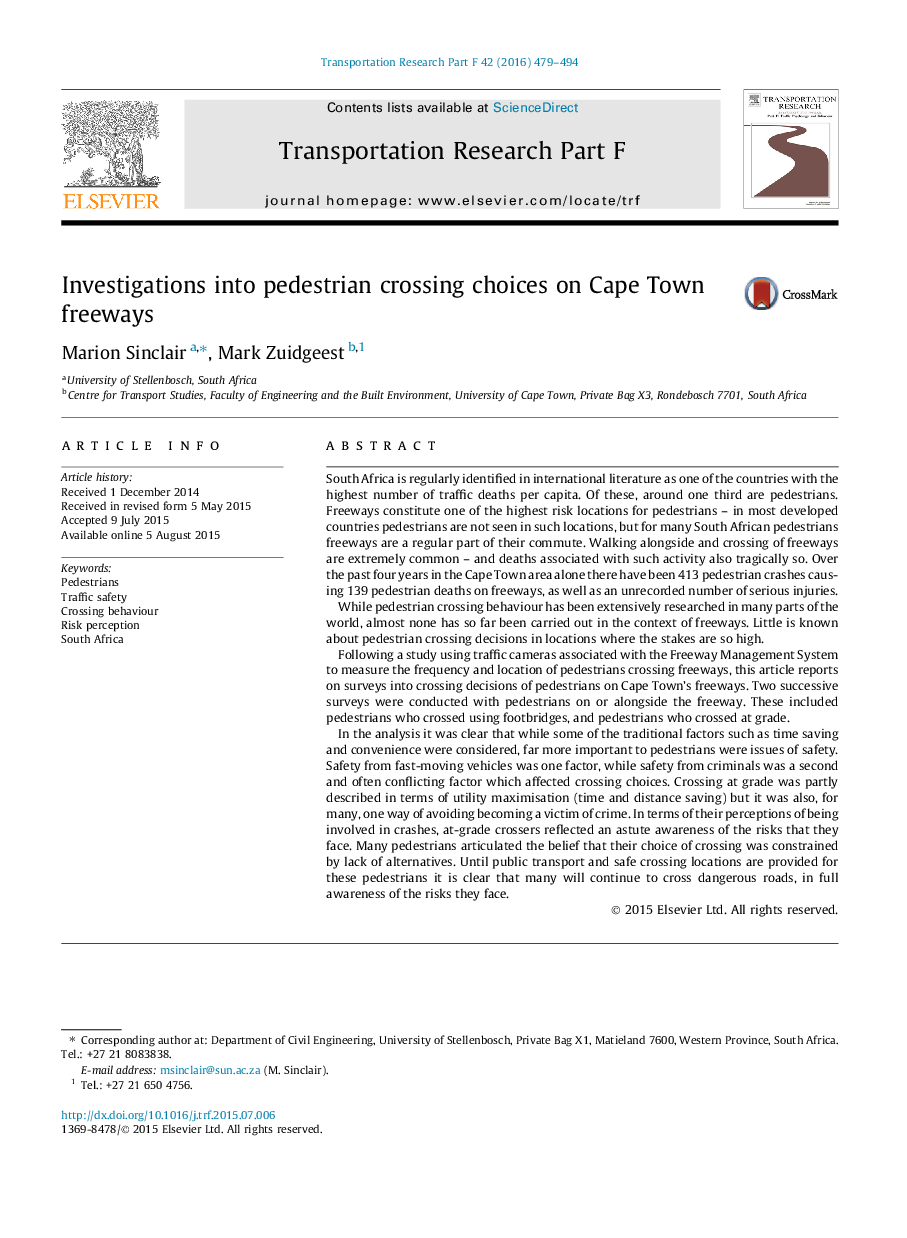| کد مقاله | کد نشریه | سال انتشار | مقاله انگلیسی | نسخه تمام متن |
|---|---|---|---|---|
| 5037341 | 1370217 | 2016 | 16 صفحه PDF | دانلود رایگان |
- Pedestrians on freeways constitute a large percentage of traffic deaths in South Africa.
- Little is known about pedestrian crossing decisions in the context of freeways.
- Crossing decisions of 492 pedestrians on Cape Town's freeways were studied.
- Pedestrians trade-off issues of risk on bridges and risk of crossing at-grade.
- Lack of alternatives constrains their choice, making many captive freeway crossers.
South Africa is regularly identified in international literature as one of the countries with the highest number of traffic deaths per capita. Of these, around one third are pedestrians. Freeways constitute one of the highest risk locations for pedestrians - in most developed countries pedestrians are not seen in such locations, but for many South African pedestrians freeways are a regular part of their commute. Walking alongside and crossing of freeways are extremely common - and deaths associated with such activity also tragically so. Over the past four years in the Cape Town area alone there have been 413 pedestrian crashes causing 139 pedestrian deaths on freeways, as well as an unrecorded number of serious injuries.While pedestrian crossing behaviour has been extensively researched in many parts of the world, almost none has so far been carried out in the context of freeways. Little is known about pedestrian crossing decisions in locations where the stakes are so high.Following a study using traffic cameras associated with the Freeway Management System to measure the frequency and location of pedestrians crossing freeways, this article reports on surveys into crossing decisions of pedestrians on Cape Town's freeways. Two successive surveys were conducted with pedestrians on or alongside the freeway. These included pedestrians who crossed using footbridges, and pedestrians who crossed at grade.In the analysis it was clear that while some of the traditional factors such as time saving and convenience were considered, far more important to pedestrians were issues of safety. Safety from fast-moving vehicles was one factor, while safety from criminals was a second and often conflicting factor which affected crossing choices. Crossing at grade was partly described in terms of utility maximisation (time and distance saving) but it was also, for many, one way of avoiding becoming a victim of crime. In terms of their perceptions of being involved in crashes, at-grade crossers reflected an astute awareness of the risks that they face. Many pedestrians articulated the belief that their choice of crossing was constrained by lack of alternatives. Until public transport and safe crossing locations are provided for these pedestrians it is clear that many will continue to cross dangerous roads, in full awareness of the risks they face.
Journal: Transportation Research Part F: Traffic Psychology and Behaviour - Volume 42, Part 3, October 2016, Pages 479-494
